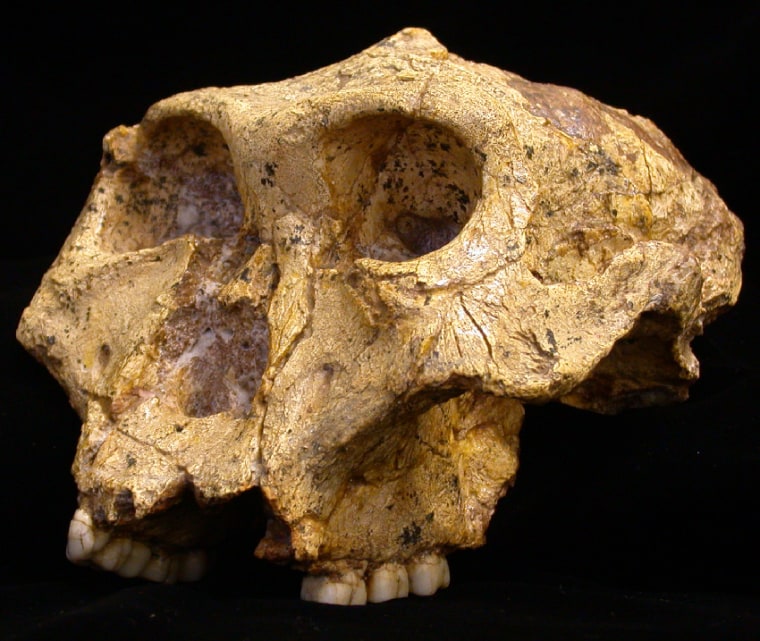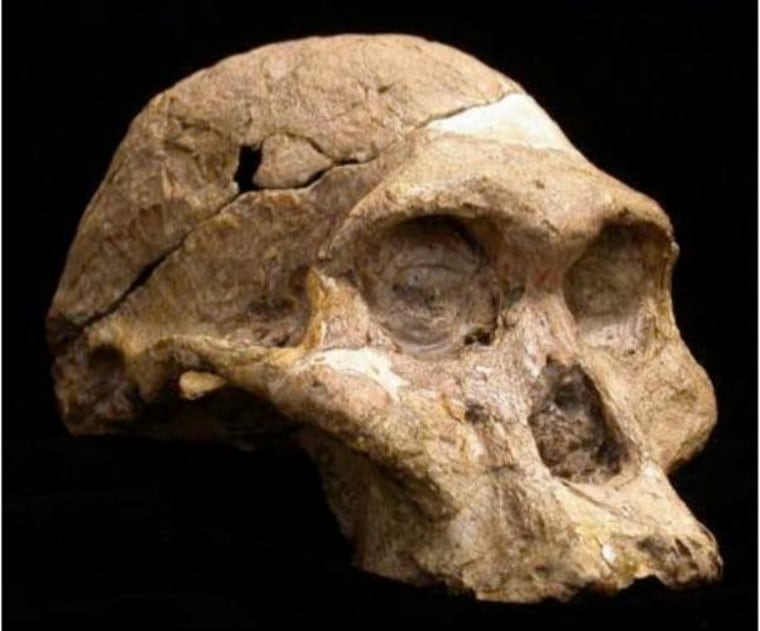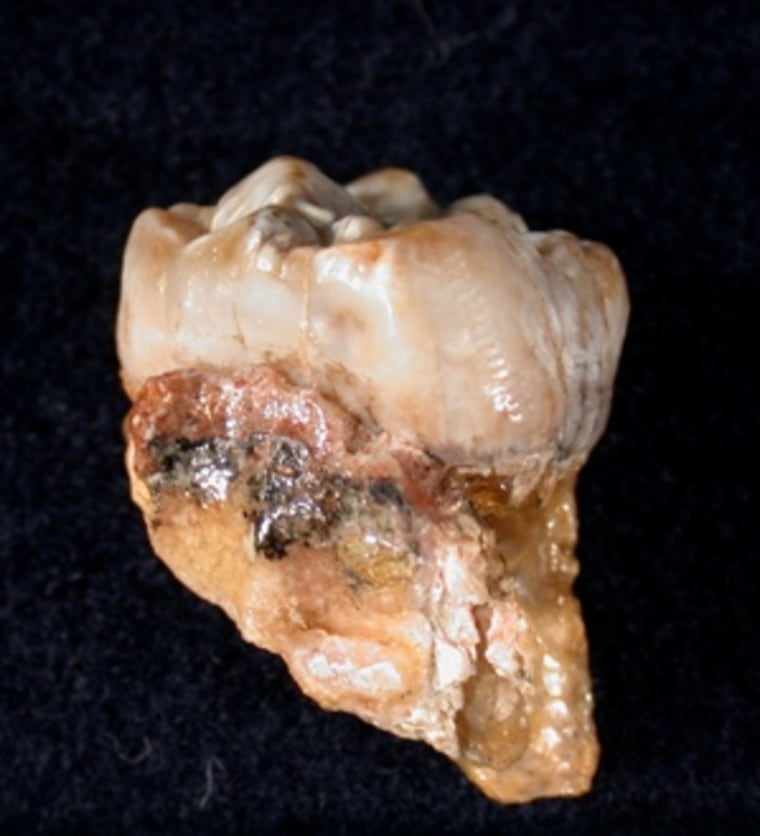
An analysis of fossil teeth from South Africa suggests that the males in pre-human societies stayed near the caves where they grew up, while the females migrated when it was time to mate.
The researchers behind the analysis say their findings, published in this week's issue of the journal Nature, could shed light on the migratory behaviors that eventually gave rise to human societies.
"This appears to be most similar to a chimpanzee social structure," said lead author Sandi Copeland, an anthropologist at the University of Colorado and Germany's Max Planck Institute for Evolutionary Anthropology. It's also consistent with the way many humans handle the process of moving out and settling down, she told journalists. "It's more often than not in modern societies that the woman is the one that leaves," she noted.
But it's not the norm in the animal world. "In most primates and most mammals, it's usually the males who leave their home community," she said. Thus, the analysis could hint at one of the factors that made us human.

The research is the result of a "continuing effort that we have been making over the last five to 10 years," focusing on an area of South Africa that's rich with caves and pre-human fossils, said Oxford University archaeologist Julia Lee-Thorp, another one of the study's co-authors. She and her colleagues have been measuring the radioisotope distribution around the Sterkfontein and Swartkans cave sites, to come up with the chemical fingerprints for samples in that area.
The point behind this exercise is to chart out the migration patterns for species that can no longer tell their own tales. By sampling the isotopes of strontium in tooth enamel, the team could determine which teeth belonged to animals that grew up in the cave region and absorbed strontium in the characteristic isotopic proportions from the foods they ate. That chemical signature remained intact in the tooth enamel throughout adulthood, even if the animals later roamed to a different area.

The researchers carefully blasted 19 pre-human teeth with pinpoint laser beams, and then analyzed the results. Eight of the teeth came from the Sterkfontein Cave and were traced to a species known as Australopithecus africanus, dating back about 2.2 million years. The other 11 teeth came from the Swartkans Cave, and are attributed to Parathropus robustus, a species that lived about 1.8 million years ago. Australopithecus is thought to be a closer ancestor of modern humans than Paranthropus.
The team expected to see a difference in the local vs. non-local distribution of the two species. They didn't.
"As the numbers rolled off the mass spectrometer after each laser ablation, we were at first disappointed," Lee-Thorp said in an Oxford news release. "But we soon realized that we had found another prize — a difference between the males and females. It was totally unexpected."
The researchers assumed that nine significantly larger teeth in their sample came from males, while the 10 significantly smaller teeth came from females. They chose these teeth for comparison precisely because of the size difference.
Based on the strontium analysis, more than half of the female-sized teeth came from outside the cave region, while 90 percent of the male-sized teeth were traced to the caves. That finding led the researchers to conclude that the males were stay-at-home types, while the females were more likely to roam.
Such a pattern is similar to that seen in chimpanzee societies, where males in a particular locale tend to stick together to defend their turf from interlopers. In order to guard against inbreeding, the younger females are likelier than the males to migrate for mating. Copeland said the situation is different for gorillas. In those societies, the dominant male gorilla rules over a harem that tends to stay put, while younger males usually have to go someplace else to find their own mates.
"This study gets us closer to understanding the social structure of ancient hominds, since we now have a better idea about the dispersal patterns," Copeland said in a University of Colorado news release.
The team's conclusions are based on less than two dozen teeth, divided up into species and sex categories. That raised questions about the small sample size. Texas A&M anthropologist Darryl de Ruiter, a study co-author, acknowledged that the team was "very constrained by the amount of material that we have available for destructive analysis." But he said that adding a few more teeth to the sample size may not have helped, because they had already selected the largest and the smallest teeth available to them.
"Anything else we would have added would have been in the gray area," he told journalists. "It wouldn't have added any value to the discrimination between males and females."
More about human origins:
- Lucy's 'great-grandfather' found
- How big babies shaped society
- Can fingers point to sex habits?
- Interactive: Before and after humans
In addition to Copeland, Lee-Thorp and de Ruiter, co-authors of "Strontium Isotope Evidence for Landscape Use by Early Hominins" include Matt Sponheimer, Daryl Codron, Petrus J. le Roux, Vaughan Grimes and Michael P. Richards.
You can connect with the Cosmic Log community by "liking" the log's Facebook page or following @b0yle on Twitter. Also, give a look to "The Case for Pluto," my book about the controversial dwarf planet and the search for new worlds.
